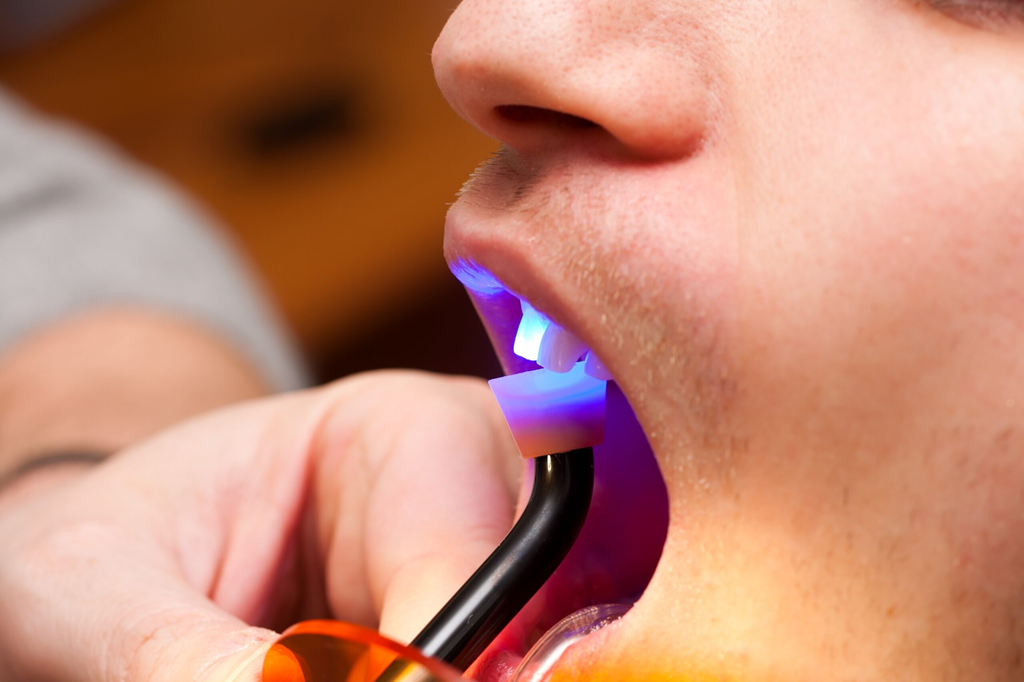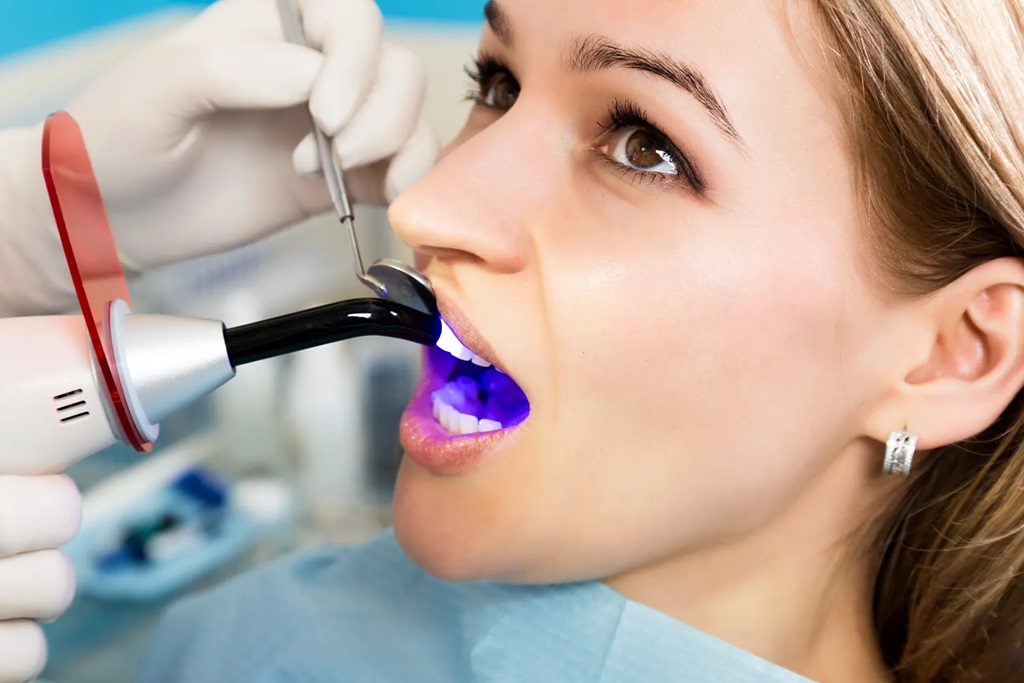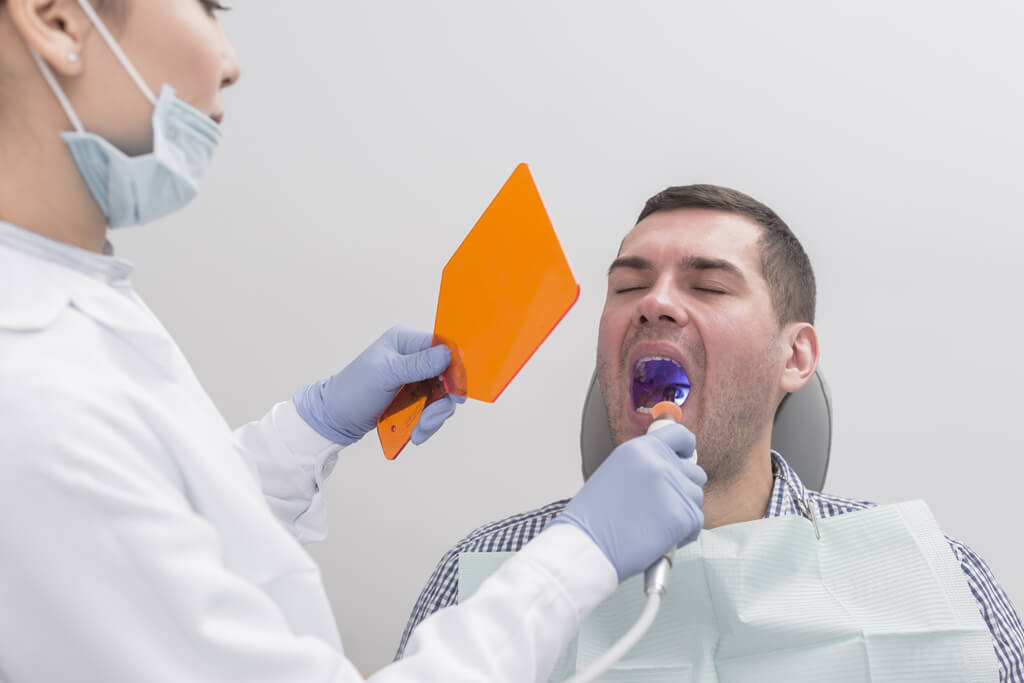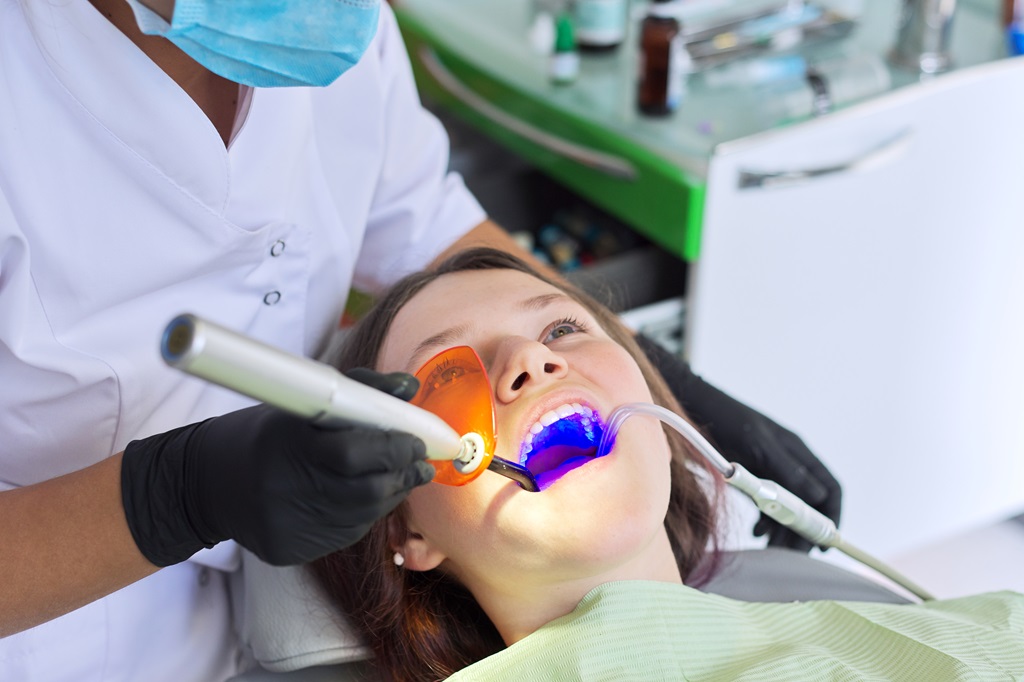Cosmetic Dentistry
Dental Bonding
Restore Your Smile with Dental Bonding in Scottsdale
Dr. Wiitala may address structural and cosmetic issues in a number of ways. One of the most conservative and affordable treatments that may be suited to your needs is dental bonding.

The cosmetic dentist procedure of dental bonding can be used for multiple reasons. Our board-certified cosmetic dentists at Eric Wiitala DDS will advise you whether or not dental bonding is the right solution for you when you have your consultation. We invite you to contact us today at our Scottsdale office to see if you are a candidate for dental bonding. Patients can use dental bonding for the following reasons:
- Repair cracked, chipped or fractured teeth.
- Repair or stop the decay of teeth.
- Improve discolored teeth.
- Change the size of teeth.
- Protect the roots of teeth that may be exposed.
- Remove the gaps between teeth.

What is Dental Bonding?
Dental bonding is a process of repairing, chipped, fractured, decayed, or stained teeth with tooth-colored composite resin. It is a quick and easy way to make teeth beautiful and natural again. Dr. Wiitala also uses bonding to fill in cracks and spaces between teeth to give you the aesthetic result you’re looking for. Dental bonding is also commonly used to whiten discolored areas of teeth.
Bonding is a type of direct veneer process intended to restore a beautiful surface. Enamel is covered with a composite resin material that, once shaped and polished, looks like your natural tooth. Because little to no reduction is necessary to achieve the desired outcome, bonding is an ideal solution for patients who do not want the commitment of a permanent restoration, such as a veneer.
Dr. Wiitala uses a conservative approach and preserves natural tooth structure to give each patient the cosmetic result they expect. Every patient and every tooth are different, and it takes dental artistry to achieve optimum results. If dental bonding is something you are interested in, please visit Eric Wiitala, DDS in Scottsdale, A
Who is a candidate for Dental Bonding?
Good candidates for dental bonding are people who have aesthetic or physical concerns about their smiles. Bonding can be performed on healthy permanent teeth that do not show signs of extensive decay or injury. The procedure can quickly improve the shape, presentation, and color of a tooth, bringing more vibrancy and harmony to the smile. Dentists also like to see that the interested patient shows signs of good oral hygiene. The better one takes care of their teeth and gums on a daily basis, the better their treatment outcomes may be.

How can I prepare for my Dental Bonding procedure?
Good candidates for dental bonding are people who have aesthetic or physical concerns about their smiles. Bonding can be performed on healthy permanent teeth that do not show signs of extensive decay or injury. The procedure can quickly improve the shape, presentation, and color of a tooth, bringing more vibrancy and harmony to the smile. Dentists also like to see that the interested patient shows signs of good oral hygiene. The better one takes care of their teeth and gums on a daily basis, the better their treatment outcomes may be.
How is Dental Bonding Performed?
Aside from its affordable cost, the dental bonding procedure is appealing because it can be completed in a single visit to our office. To restore a tooth, the surface is etched slightly with a liquid primer. The conditioning solution promotes a strong bond between enamel and composite resin. While working with the putty-like substance, Dr. Wiitala pays close attention to the tiny details that will achieve a lifelike appearance. To complete treatment, the composite is hardened with light. The tooth is polished and you can go about your day with a beautiful new smile!
Is Dental Bonding painful?
The dental bonding process is simple and requires only a few steps. Treatment takes only about 30 to 60 minutes per tooth. Because all work is done on a surface level, patients typically report minimal, if any, discomfort. Depending on the part of the tooth receiving the bonding material, the dentist may administer a topical or local anesthetic to ensure that the patient remains comfortable during their short procedure. For example, if the procedure is performed to cover a deeper crack or chip, there is a potential for nerve irritation, so treatment may include anesthetic.

Post-Dental Bonding Procedure:
Dental bonding carries minimal risk due to its minimal tooth reduction. It’s best for small issues like gaps or chips and can last up to ten years with proper care. However, it can stain over time, similar to natural teeth. Porcelain veneers, on the other hand, are ideal for concealing larger imperfections. Porcelain closely resembles enamel, offering excellent results, especially in more visible areas of your smile due to its superior translucency compared to composite.
Does Dental Bonding affect your ability to eat?
The dental bonding procedure involves curing the resin material using light. The bond is set immediately with this step, so patients need not wait to eat or drink, provided that they did not receive an injection of numbing medication. In that instance, they should wait until their mouth is no longer numb before eating or drinking hot beverages.
Having dental bonding does not prevent people from enjoying a wide variety of foods. That said, to preserve their dental work, patients should avoid biting into hard, crunchy, or very chewy foods using their front teeth. Examples include apples, carrots, bagels or other hard breads, and dense meat like ribs. Foods that may damage the bond can be cut into bite-sized pieces.
What can I expect from my results?
Dental bonding can be a gratifying procedure because the results of treatment are immediate. Once the resin has hardened in place, the results of the bonding procedure can last from three to 10 years. Several factors may influence how long the bond lasts, from oral health to habits like chewing on hard objects like ice, fingernails, or pen caps. Fortunately, bonding can be touched up if necessary.
Can I combine Dental Bonding with other procedures?
Yes. Dental bonding can be combined with other procedures, ranging from gum contouring to tooth contouring to whitening and other treatments. This cosmetic treatment is conservative, quick, and effective at disguising a variety of concerns.

Cost & Insurance
In our office, we discuss the costs and details of dental bonding treatment during your consultation. Variables differ from patient to patient based on the extent of work to be done and the nature of the problem. When bonding is performed to repair damage such as a cavity, insurance coverage may be available to assist with the final cost. However, most insurance companies do not extend benefits for cosmetic bonding. Before your procedure, you are encouraged to speak with your dental coverage provider. Click here to access more information on Eric Wiitala, DDS’s financing policies.
Kind Words From Proud Patients
Great staff and Dr. Wiitala is very professional and personable
Dr Wiitala and his staff are the best – friendly, professional and knowledgeable. My family has been going to Dr Wiitala for a decade or more. It’s the best dental office ever.
Professional, excellent experience as always. Dental hygienist, Andrea thoroughly cleaned my teeth and Dr. Wiitala identified filling in need of repair before it would become a major problem down the road. This is reason I’ve been a client of Dr. Wiitala for 15+ years.
I had not been to the Dentist in quite awhile but broke a crown. Dr. Wiitala and his staff were tremendous! They were able to get me in quickly. At the appointment, everyone was friendly and professional. They communicated to me every step of the way and were able to perfectly correct my issue in a quick and painless manner! I would highly recommend Dr. Wiitala and his staff. They all were terrific!
Thank you again to Dr Wiitala and his great staff for their skilled dental care. I had my teeth cleaned by Lindsey who does a superb job, keeping my comfort in mind. I highly recommend this dental office for all your dental needs.
